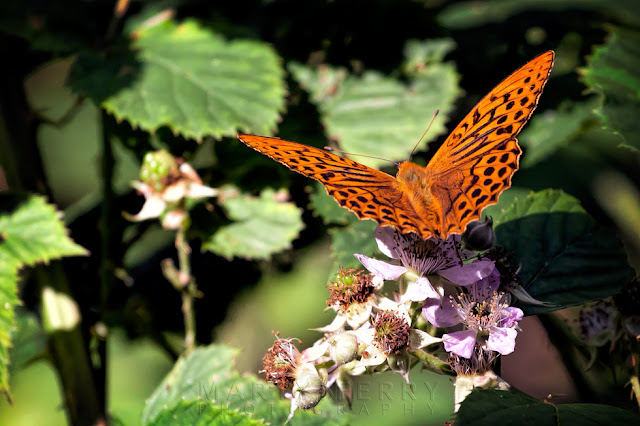Last weekend I paid a visit to one of my favourite places, namely Holme Fen Nature Reserve. This beautiful woodland oozes atmosphere, and is a beautiful place to visit any time of the year, mainly thanks to its dense forest of silver birches, which have to be one of the most charismatic of all the UK trees.
I won't go into the history of the Holme Fen, as fascinating as it is, and although there are a smattering of pictures in this post of the woodland, I have taken plenty more through the various seasons, all of which can be found here, here, here & here.
No, I was off to get some images of the summer wildlife that abounds in this Natural England run nature reserve, in particular, the various butterflies that call this place home while they are on the wing.
There were thousands of these colourful little flappers galavanting about the place, twirling around each other and flitting hither and thither above my head, and sometimes on it, if I was standing particularly still, trying to get a picture.
Below are a selection of images taken that day, when the butterflies were at rest, or sipping nectar, predominantly from the blossom of blackberry bushes, of which Holme Fen boasts an impressive number.
Peacock
Probably the most recognisable of all the UK butterflies, thanks to the eyes on its wings, which resemble the plumage of a peacock. This is one of the few butterfly species that hibernate, or more correctly, go dormant through the winter months as an adult, so it's not unusual to see one out and about on some of the warmer winter days. The peacock is able to make a hissing noise that is audible to human ears, by rubbing its wings together, which along with the eye spots help deter predators.
Red admiral
Another well known species, the majority of the these striking butterflies arrive as migrants from Central Europe and North Africa, although recently a small group has been seen to be overwintering in the far south of Britain, most probably due to temperatures warming. The population fluctuates a great deal from year to year though, depending on how many make it over. Once here however, very few adults survive the winter, so it is up the the next wave of travellers to replenish the stock.
Ringlet
A common butterfly that is actually more interesting to look at when its wings are folded, as the uppersides are a uniform brown colour. The dark colouring allows the insect to warm up very quickly, which is why it is one of the few species that can be seen on the wing, with its characteristic bobbing flight, on overcast days.
Meadow brown
A close relative of the Ringlet, the meadow brown is one of the most common and widespread species in the UK, and given the right habitat, colonies can number in the thousands. This is another butterfly that can fly on overcast days, and even when it is spotting with rain, which would ground most other species. The meadow brown does not overwinter as an adult, so there is a new generation each year.
Male silver-washed fritillary
This is the UK's largest Fritillary, the bright orange male is a distinctive presence, with a very powerful flight. Changes is woodland management have led to a sharp decline in this once common species, it used to be widespread across England and Wales but is now only found in southern England, but there are signs it is making a comeback. They are very inquisitive, and will approach anything that is orange in colour, in case it is a potential mate. Courtship is quite spectacular: the female flies in a straight line while the male loops the loop around her, before showering her in a confetti of scent scales.
Female silver-washed fritillary - valesina
Females generally have a similar pattern of black spots. They are normally a dull golden colour, often with a slight bronzy tinge. But in a small percentage of females, (less than 10%) primarily in the larger colonies in southern England, they show the form valesina, where the orange is replaced with a green/brown hue, as you can see below, these females also have some blue pigmentation.


















No comments:
Post a Comment